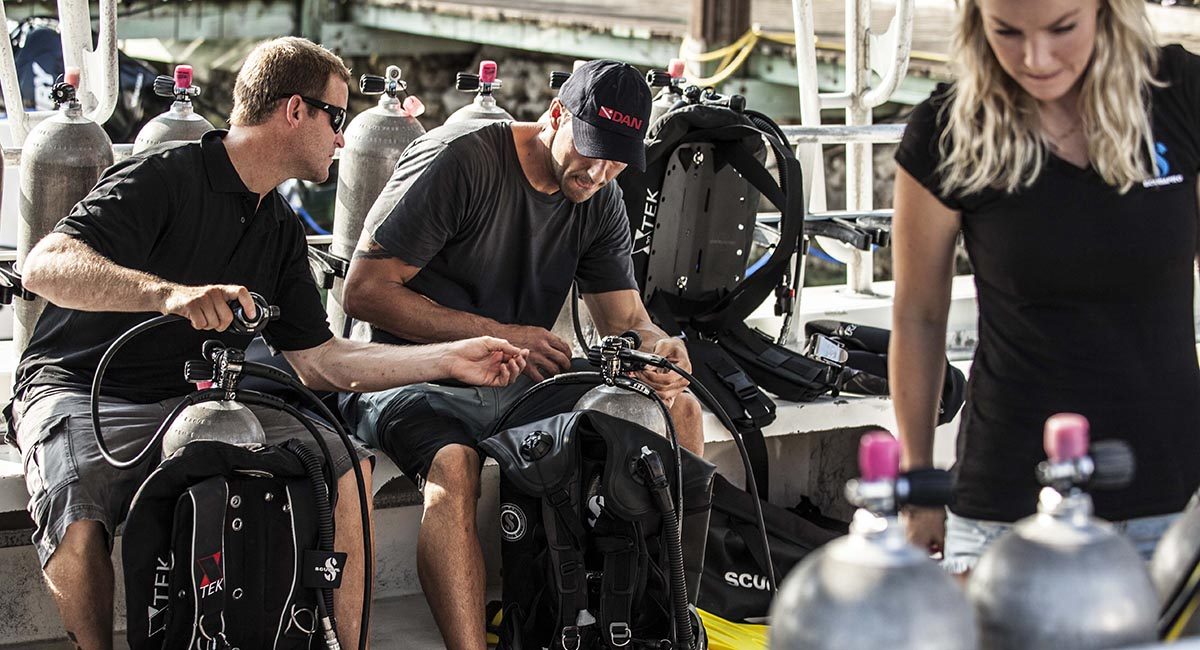As divers, we’re all familiar with the demands of traveling with dive gear. Luckily, routine maintenance and careful storage of gear can not only make your diving safer, but it can make your trip planning easier. The following guidelines will help you make sure your gear is ready to go when you are:
| Item(s) | Before you Dive | After you Dive | Storage | Professional Servicing |
|---|---|---|---|---|
| Mask, snorkel and fins | Keep well organized to minimize the risk of their being kicked, stepped on or tripped over. | Rinse and dry well. | Pack and store carefully so they’re not crushed by the heavier gear. | Not applicable. |
| BC/BCD | Test before you dive. | Rinse the outside and flush the bladder with fresh water. Hang to dry. | After drying, partially inflate jacket for storage. | Have professionally inspected annually; remember the low pressure hose and dump valve. |
| Regulator | Test function as soon as you set up your gear. | Rinse and clean while still connected to cylinder and pressurized. Leave out to dry. | Keep dust cap in place and secured. Store in a regulator bag. | Service at least once a year. |
| Wetsuit, boots, gloves and hood | If necessary, lubricate zippers. | Rinse, turn inside out, and hang to dry. If wetsuit has an unpleasant odor, use wetsuit shampoo in postdive rinse. | Store in the shade, as neoprene is susceptible to UV damage. | Not applicable. |
| Dive computer | Check battery icon. | Rinse and dry. | Store in a dry, cool, ventilated area. | Service every one to two years, or per the manufacturer’s recommendation. |
| Cylinder | Handle with extreme care, as a pressurized cylinder presents a risk of explosion. Secure tightly for transportation. | Rinse thoroughly and let dry. Regularly remove tank boot to prevent a buildup of salt and debris. | Never drain completely of gas. Reduce pressure to the lowest reading on the pressure gauge. Keep a dry dust cap on cylinder valve. | Make a visual inspection once a year. Perform a hydrostatic test every five years. |
